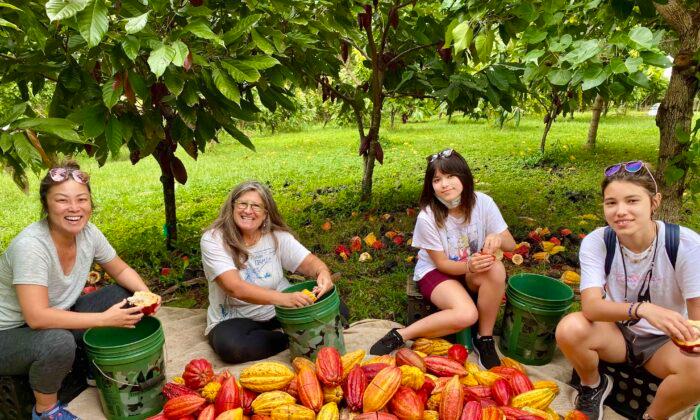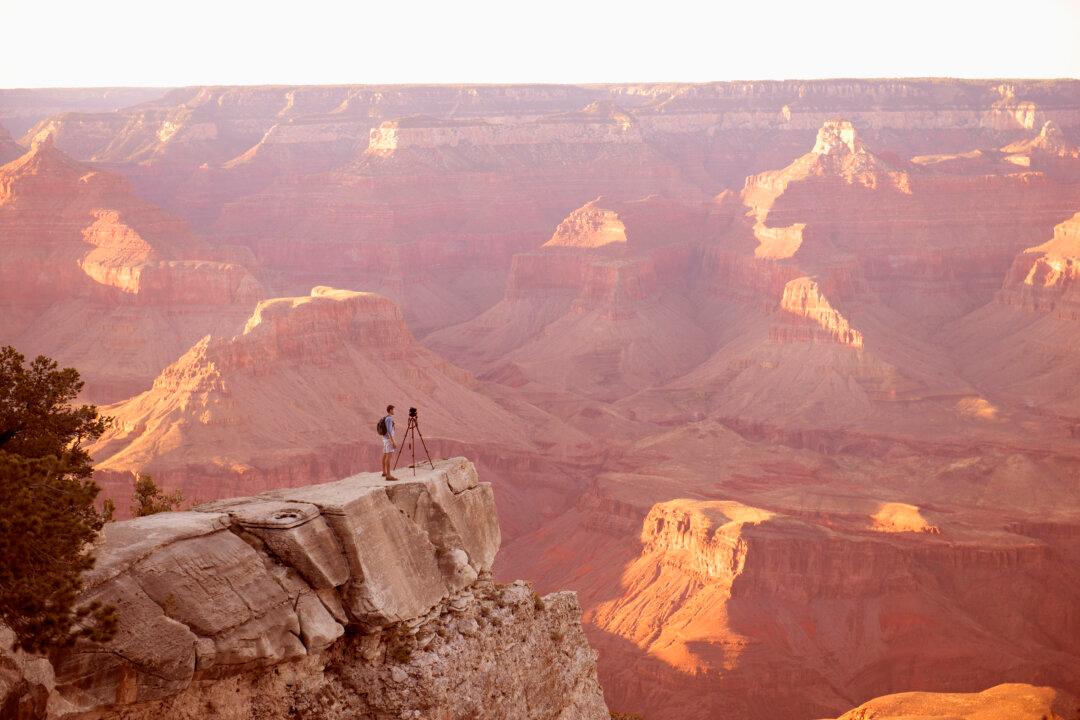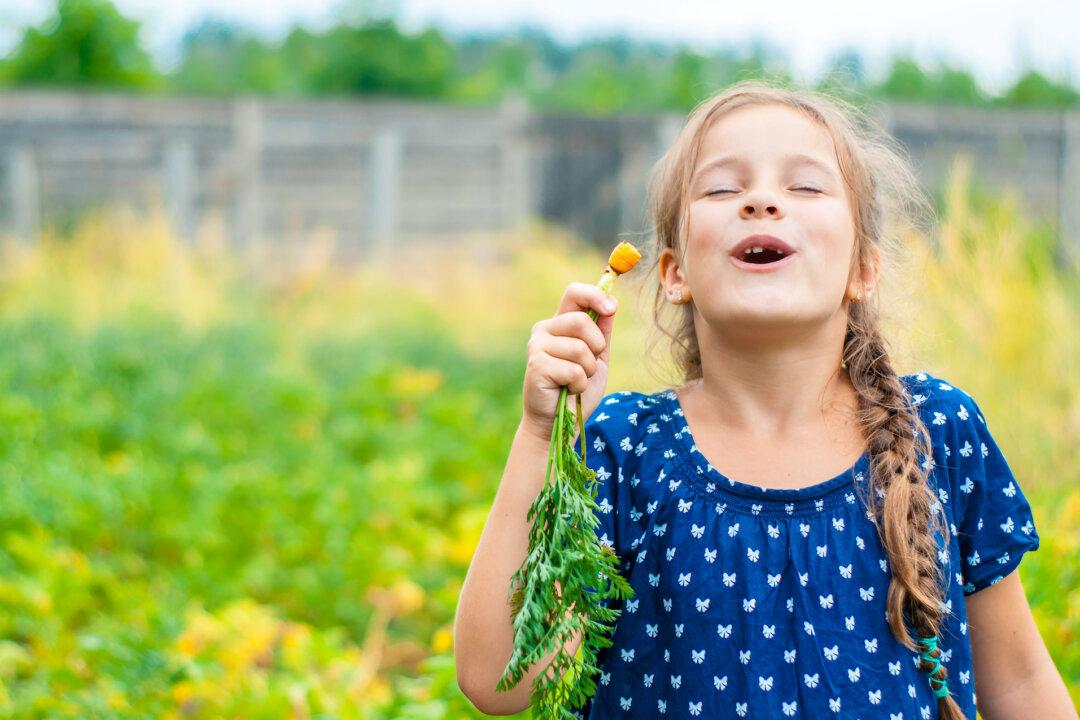“Now, don’t just gobble it down all at once.”
When Will Lydgate is introducing people to his Kauai chocolate, he suggests they melt it in their mouths first, to allow the flavor of the estate-grown cacao to reach full impact on their palates. Invariably, Lydgate Farms visitors exclaim over the light, mellow taste and the lack of bitterness and astringency that often puts Americans off dark chocolate. “Never knew it could taste as good as this,” they report.
“There’s nothing intrinsically bitter about dark chocolate,” Lydgate tells them. “You’ve just had bad dark chocolate.”


An outspoken advocate for the nascent Hawaiian Islands chocolate industry, and the fifth generation of a Kauai farming family, Lydgate’s enthusiasm for his business is as deep and potent as his chocolate. Lydgate Farms’s 46-acre location on Kauai’s east shore, nestled in the foothills of Mount Waialeale, has 3,000 cacao trees, some as old as 20 years—making it one of the larger and older cacao orchards in the islands.
Still a modest niche in Hawaii’s agricultural industry—which is currently dominated by macadamias and coffee, each worth about $62 million a year—estate-grown cacao and its specialty outcome, bean-to-bar chocolate, have gained enough visibility since their mid-’90s beginnings that they could earn a precious modern designation. It’s a trend.

Small-Farm, Small-Batch
The state’s largest cacao orchard is Oahu’s Waialua Estate, which also helped inaugurate the industry in 1996 when its orchard was planted on a former sugar-cane plantation, largely as an experiment. Although cacao was first brought to the islands in the mid-19th century, the dominance of sugar, pineapples, macadamias, and then coffee focused interest on other crops until quite recently. Waialua Estate is about 80 acres—larger than Lydgate’s, but still tiny by global standards.The Hawaiian cacao industry’s small-farm, artisan nature lends itself to producing a distinctive product. At Lydgate Farms, small-lot “box” fermentation of the farm’s 3 metric tons of cacao beans means that, after the first 48 hours, each batch is turned every 24 hours to promote aeration and boost the yeasts that sweeten and mellow the beans.
Today, there are cacao orchards on five islands and chocolate makers on the four main ones: Kauai, Oahu, Maui, and the Big Island. Several farms, including Lydgate Farms, have been recognized in the Paris-based Cocoa of Excellence Awards. Hawaii-grown chocolate populates gift and food stores, is widely available online, draws ever more visitors to farm tours such as those at Lydgate, and now has its own festival, the Kauai Chocolate and Coffee Festival.

Island Terroir
Like all trends, myths and misinformation go along for the ride. No, Hawaii is not the northernmost place cacao is grown—orchards in Asia hold that distinction, Lydgate said. “I’d like to stamp out the ‘North Pole of Chocolate’ nonsense,” he said, referring to an urban-myth moniker for Hawaiian cacao that appeared a decade or so ago. “Let’s just win people over to Hawaiian chocolate on the basis of how good it is.”Hawaiian cacao has a distinctively wonderful flavor, even among the dozens of very fine chocolates from around the globe. Comparisons seem obvious to the Islands’ famous coffee, which has enjoyed a renaissance with the specialty coffee boom of the past 30 years. Hawaiian coffee has a distinctive taste and cachet derived from what ag producers call “terroir,” in this case citing the Islands’ lava landscape, trade winds-borne rainfall, and reliable afternoon cloud cover’s role in producing the coffee’s characteristic flavor. As explained by Robert Dye, whose Waimea Chocolate Company is on Maui, “The same unique growing conditions—the lava landscape, the climate, the salt air—that work so well for coffee in the Islands are equally beneficial for cacao.”



Lydgate, who transforms all of his beans into estate-branded chocolate, says Hawaiian cacao has a brighter, lighter, and fruitier character compared to that from other origins. Taste elements include plum, pie cherry, blackberry, and pear; fragrances range from petunia to strawberry. Some connoisseurs attribute this to the fact that, northernmost or not, Hawaiian cacao is grown at a latitude farther (19 degrees) from the equator than most African and South American growers inhabit. Thus, like champagne grapes, cooler night-time temperatures—sometimes in the 60s—boost the character.
“Our northern latitude can be an advantage—both agronomically and in a marketing sense,” said Skip Bittenbender, former agronomist and cacao advocate at the University of Hawaii’s College of Tropical Agriculture and Human Resources.
For connoisseurs who may unaccountably grow bored with plain dark Hawaiian chocolate, its brighter flavor makes it perfect for amendment with passion fruit, coffee, and other iconic island foodstuffs. Island chocolatiers may add estate-grown vanilla, local honey, lavender, coconut, macadamia, sea salt, and more. Any such flavoring simply magnifies the splendor of the base chocolate.
“We’ll just work at opening eyes one taste-test at a time,” vowed Lydgate.








